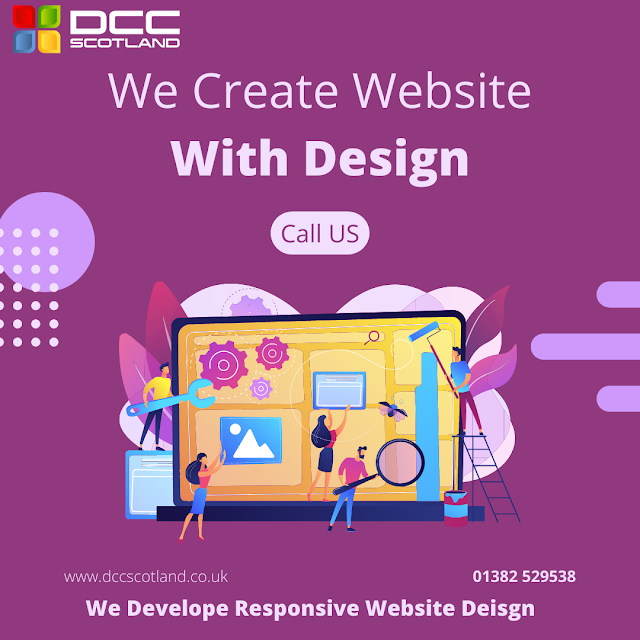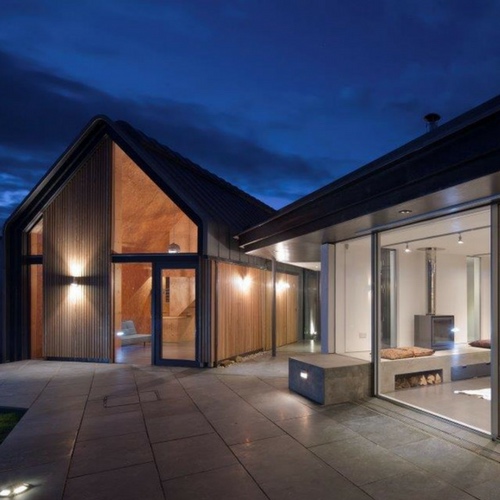How to Use Visuals and Images in Website Design
The layout and structure of a website Design Glasgow can make or break its ability to attract, engage, and convert visitors. Having a clear idea of your goals can help you and your designer find the best solutions for your business.
Blogs are informational websites consisting of discrete, often informal diary-style text entries. They are often about personal opinions and interests or about a specific topic.
Visuals and images
Incorporating visuals and images in website design is a vital part of creating a captivating user experience. These elements can catch users' attention, draw them in, and help to explain complex concepts. They can also enhance the overall usability of a website. However, it's important to use these visuals strategically, as they can quickly become overpowering and distract from the content. It is also important to balance visuals with text to avoid a cluttered or chaotic appearance.
Choosing the right file formats is essential to ensure that your visuals are of high quality and look good on all devices. For example, JPEG is a great choice for photographs and other images with solid colors, while PNG is perfect for graphics or illustrations with transparency. SVG is ideal for scalable vector graphics, and GIFs are good for simple animations. It is also important to consider accessibility when designing your visuals, as it can make a significant difference in the user experience for people with visual impairments. For example, avoiding relying solely on color and using appropriate contrast ratios can increase the accessibility of your visuals for people with colorblindness.
Incorporating visuals and images in your website design is a great way to keep users engaged and encourage them to explore your site. Choosing the right visuals will help you build brand character, make your site more aesthetically appealing, and improve overall usability. In addition, it is important to remember that your website's content is king, so be sure to include relevant and interesting information that will keep users coming back for more. Also, remember that users are less likely to engage with content that is difficult to read or understand.
Parallax
Parallax is a special scrolling technique that creates the illusion of depth on two-dimensional websites. It is used to liven up web designs by adding movement, enhancing interactivity and creating a sense of depth and distance. Originally used in computer graphics and video games, parallax is one of the most popular web design techniques today. It can help users get involved in a website, letting them explore it at their own pace.
There are many different ways to use parallax in a website, but it is important not to overdo it. Overusing it can cause your site to load slowly, and it may not work well on some devices. However, if you are careful to use this tool wisely, it can enhance the user experience and draw attention to your content.
Aside from boosting interactivity, parallax also adds an element of uniqueness to your website. It can be an effective way to create a storyline for your website, enticing users to keep scrolling until they reach the bottom of the page. Parallax can also be used to highlight call to action buttons or to make a specific image stand out.
The website of Custo presents its smart mailbox in a playful manner, using parallax to highlight the various functions of this innovative product. The design team also uses the technique to create a timeline of the company’s history.
The website of Tag Heuer illustrates its unique watches through parallax animation and 3D effects. This approach makes it easy for the viewer to familiarize themselves with the strengths of each model while still enjoying a fun experience. Similarly, the Meadlight website takes advantage of this technique to present its unique honey drink. The designers have chosen to use large, expressive typography in this design, and they have incorporated the parallax effect to accentuate the movement of the illustrations.
Interactive elements
Websites that are interactive keep users engaged and encourage repeat visits. They also help build brand loyalty and trust. This is a great way to create a more dynamic and memorable user experience, which is essential for any small business. However, implementing interactive elements can be challenging. There are many factors to consider, such as user experience, technical complexity, and compatibility issues. This blog post will discuss the benefits of using interactive elements in website design, as well as some best practices for incorporating them into your site.
An interactive element is any feature that reacts to user input or movement in some way. This can include animations, scrolling effects, and even games that let users compete with others. This type of design has become increasingly popular, as more and more websites are embracing the trend to make their sites more engaging for their customers.
Some examples of interactive elements include dynamic scrolling, where website content changes as the visitor scrolls down the page. Other examples include hover-triggered changes, such as when a mouse cursor is moved over a button or menu. This style of interaction is often used to add a playful element to the site.
Other forms of interactivity can involve creating a sense of community and connection between users, such as through polls or surveys. This can help businesses gain insights about their target audience, which is valuable information for any company. It can also be a great way to promote a new product or service. For example, the Brown University website features an interactive game that teaches visitors to speak words in Marra, an indigenous language from Australia. This is a fun and engaging way to promote a new language program and attract students.
Visual hierarchy
Visual hierarchy is the way web designers arrange elements to create an order of importance on a page. It helps users quickly understand the content and find what they need. Web designers use a variety of techniques to achieve this, including using contrast, proximity, and alignment. By understanding the importance of visual hierarchy, you can improve website usability and user experience.
For example, if you want users to click on a button, you can make it larger and more colorful than other text and graphics on the page. This will help the eye focus on that element and guide them to take action. You can also use text to highlight keywords and phrases. Using the right size and style of font will also help you create a clear hierarchy.
Hierarchy is important for website usability because it allows you to communicate with your audience in a more effective manner. If a website is cluttered and confusing, the audience may not stay for long. A well-organized website will draw in visitors and encourage them to explore the business and its products.
For instance, if you are looking for a job at your dream company, you might go to their website and scan the homepage for the careers page. A good website will have the careers page listed prominently on the homepage and will be clearly labeled as such.
The most common way to build a visual hierarchy is by using size and contrast. Bigger elements will attract the most attention, so you should place them at the top of the page. Smaller elements should be placed below the primary element. This arrangement is called a hero image. The hero image is the first element a visitor sees and should capture their attention.
Usability
Website usability is all about ensuring that visitors can find the information they’re looking for, navigate the site and complete their tasks without any problems. It involves considering user behaviors, expectations and cognitive abilities while aiming to minimize barriers and frustrations. The key to successful website usability is clear, intuitive design and a high level of user satisfaction.
To achieve this, web designers should remember that users scan webpages and they often skim-read text. They should also use visuals to highlight important points and ensure that content is easy to read. Lastly, they should provide instant gratification to their visitors by designing the site with page loading times in mind.
While website usability is a relatively new concept, it has become an important aspect of the design process. People are accustomed to the ease of use of electronic devices, so they will quickly abandon a site that is difficult to navigate. This means that website owners need to invest time and effort in evaluating their designs for usability before they publish them on the internet.
Several methods can be used to evaluate website usability, including eye-tracking tools, heatmaps and user surveys. Metrics are another effective tool for assessing usability, as they can provide a quantitative measure of how well a website is working. For example, churn rates, click-through rates and the time spent on each page are all valuable metrics for determining how usable a site is. Using these metrics can help identify any potential issues before they occur, allowing designers to make changes in advance. This will help improve the user experience and increase conversions. It is also a good idea to test website usability with real users, if possible.



Comments
Post a Comment